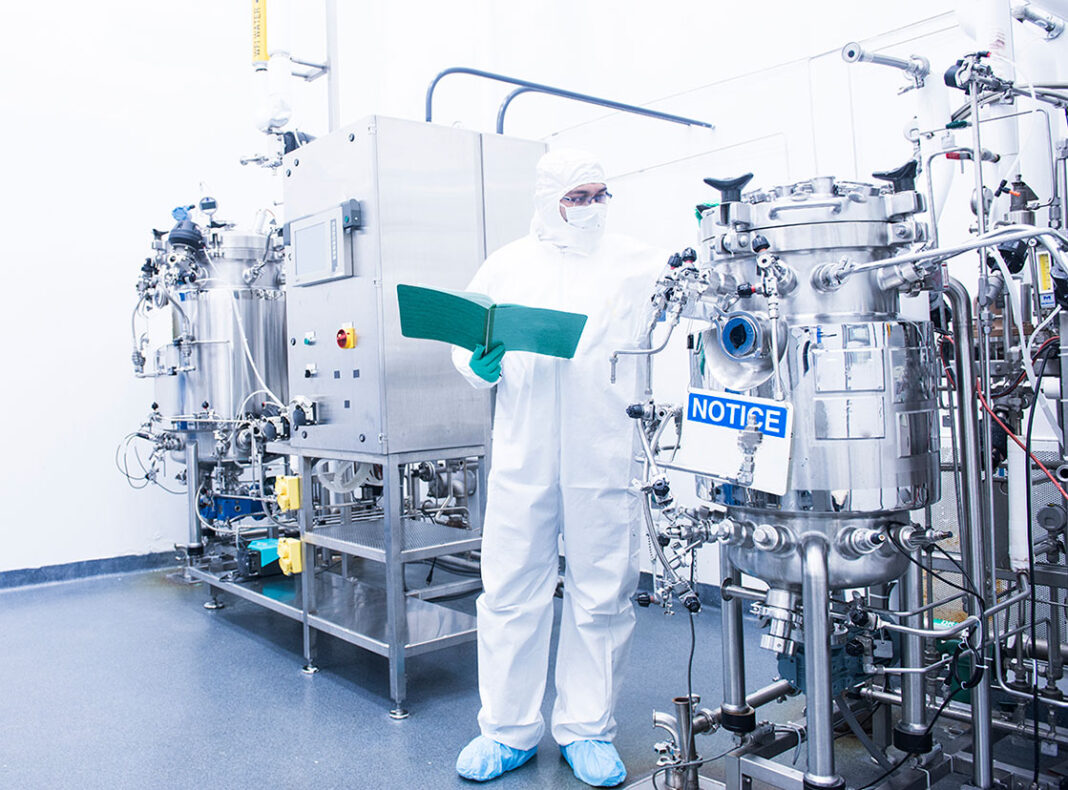Medical applications of mRNA technology are in the spotlight—not just mRNA-based vaccines, but mRNA-based therapeutics, too. The mRNA-based vaccines are the most conspicuous successes. They include the vaccines approved for use against COVID-19, of course, as well as the more recent vaccines approved for use against respiratory syncytial virus. Although regulatory approval has yet to be secured by any mRNA-based therapeutics, dozens of these drugs are in clinical trials for indications such as cancer and cardiovascular diseases. There are also mRNA-based therapeutics in development for regenerative medicine applications.
The technological and clinical advances are accompanied by optimistic predictions from market researchers. For example, according to Research and Markets, the global mRNA vaccines and therapeutics market will reach $66.2 billion by 2028, up from $56.1 billion in 2022, reflecting an annual growth rate of 2.8%.
To realize the potential for mRNA vaccines and therapeutics, industry players are enhancing their tools and technologies. Some of the most prominent players—vaccine and therapeutic developers, platform providers, and manufacturing consultants—shared their insights at the mRNA Conference 2023. Let’s revisit (and expand on) these insights here.
This article will describe self-amplifying mRNA that encodes antigen cassettes (for improving immune responses) and replicases (for prolonging antigen exposure); circular RNA that bears an internal ribosomal entry sequence (for initiating translation and ensuring durable antigen expression); synthetic DNA templates (for intensifying mRNA production); “programmed” nanoparticles (for improving targeted delivery); and cGMP preparations (for easing the transition to mRNA manufacturing).
AI-identified antigens, self-amplified mRNAs
Effective antiviral vaccines ideally generate neutralizing antibodies to viral proteins and T-cell responses to the small viral fragments displayed on the surface of virally infected cells. To create such vaccines, Gritstone Bio is employing a technology for antigen identification (a proprietary artificial intelligence–driven platform called EDGE) and a technology for self-amplifying mRNA (samRNA).
“Coupling these technologies enables the design of vaccines that can deliver combinations of full-length antigens and select T-cell epitopes, leading to potent and broad humoral and cellular immune responses,” says Amy Rappaport, PhD, the company’s senior director. “While current mRNA vaccines have effectively reduced the severity and mortality for COVID-19, antibody titers wane within six months, and frequent boosting is required, particularly in the context of emerging variants of concern.
“As the name suggests, Gritstone Bio’s samRNA vaccine is self-amplifying. It leads to longer antigen expression and increased durability and breadth of immune responses, and it permits lower doses than conventional or first-generation mRNA.”
Rappaport explains that samRNA technology works by encoding an alphavirus replicase complex in addition to an antigen cassette selected for the target disease. “The samRNA is encapsulated in lipid nanoparticles, which deliver the samRNA into cells following immunization,” she continues. “Once in the cell, the replicase is expressed and drives the amplification of the antigen cassette, leading to high and sustained expression. This allows for durable expression at low doses, in contrast to first-generation mRNA vaccines, where the RNA that is delivered is all you get.”
For infectious disease targets, Gritstone Bio is applying its technology in vaccine programs against SARS-CoV-2, HIV, HPV, multiple respiratory viruses, and influenza. The company also has two cancer vaccine programs. Both are designed to drive strong T-cell responses to tumor-specific neoantigens to achieve tumor cell killing and efficacy in combination with checkpoint inhibitors.

Circular and linear approaches to durability
Going around in circles seldom leads anywhere. However, newly emerging circular RNA–based therapeutic platforms are offering potential applications for a range of diseases and could help address current shortcomings of mRNA-based vaccines.

“Although mRNA vaccines have been democratized by the success of COVID-19 vaccines, some challenges remain, like the durability of the immune responses or the potential lack of memory responses,” says Gilles Besin, PhD, chief scientific officer, Orbital Therapeutics. “For now, we see mainly efforts to develop vaccines against viral or cancer targets, but mRNA vaccine technology has the potential to be applied against fungal and bacterial targets.”
Orbital is developing both linear and circular RNA technologies with the goal of enhancing the immune response by extending the duration of antigen exposure. “We have a platform based on a closed circle RNA molecule,” Besin relates. “It contains several important structural elements, like an internal ribosomal entry sequence (IRES), required to initiate translation.
“Because it resists exonucleases, closed circle RNA, or circular RNA, can extend durability of expression in a cell-dependent manner. Early studies suggest that circular RNA could elicit better T-cell responses.” Moreover, early studies indicate that circular RNA-based vaccines can be administered more safely and manufactured more simply.
Although Orbital’s closed circle RNA is currently at the preclinical stage, Besin believes that circular RNA will lead to strong candidates for next-generation vaccines and other applications. “We are an RNA medicines company,” he declares. “We are also developing RNA-based treatments for rare diseases, cell therapies for cancer and immune diseases, and regenerative medicines. We will remain agnostic and develop RNA medicines for diseases where RNA can help.”
Synthetic templates, nanoparticle vectors
To accelerate the development of mRNA vaccines, 4basebio is targeting novel synthesis and delivery platforms. “We provide a cell-free, enzymatic DNA amplification process called Trueprime,” says Heikki Lanckriet, PhD, the company’s CEO and CSO. “It delivers customized linear DNA templates for a range of applications.

“For mRNA, we recommend our opDNA template, which is ready to use for in vitro transcription to manufacture mRNA. Other formats cater to gene therapy vector manufacture, gene editing, and DNA vaccines.” The main difference between the distinct proprietary linear DNA formats the company produces is the way the ends are finished.
The “opDNA” refers to a linear DNA template that has a hairpin closure on one of the ends. “For in vitro transcription, we recommend keeping opDNA open at the 3¢ end,” Lanckriet advises. “[This format has been] used extensively and successfully by us and our clients. For smaller mRNA products, such as the products used in mRNA-based vaccines, this means nearly double the amount of mRNA can be produced with the same amount of DNA.”
Lanckriet notes that using opDNA can also overcome other drawbacks of the traditionally used plasmid DNA such as long lead times and supply bottlenecks. “Because the enzymatic manufacturing process is cell free, it does not produce any cellular contaminants such as endotoxin,” he explains. “Our unique template generation process eliminates all nonessential sequences present in a plasmid backbone. However, essential sequence context such as inverted terminal repeats or poly A tails for viral vector and mRNA production, respectively, is readily produced in high quality.”
In addition, 4basebio has developed a nonviral targeted delivery platform called Hermes. “The nonviral nanoparticle comprises an interchangeable targeting moiety that allows for preferential uptake in a specific cell or target tissue of interest and mitigates off target effects,” Lanckriet details. “In addition, this improves packaging of the payload and increases the thermal stability of the particles. The particles have low immunogenicity, enabling repeat dosing strategies, and are suitable for various routes of administration. Manufacturing is scalable, cost-effective, and driven by self-assembly processes.”
Programmable medicines
The typical delivery vehicle for mRNA vaccines is a lipid nanoparticle that consists primarily of synthetic components. A more natural approach is being explored by Senda Biosciences. The company is mining information from natural nanoparticles that evolved to precisely shuttle biomolecules between species and into human cells. Natural nanoparticles represent a rich source of biological targeting information.

Senda Biosciences has developed the Senda Atlas. According to Stuart Milstein, PhD, the company’s chief platform officer, the Senda Atlas is designed to support the “programming” of nanoparticles. Basically, nanoparticles are endowed with properties to enhance therapeutic delivery.
“Meeting the challenge of ‘programmable delivery’ means that we can arrange for vaccines and therapies to be delivered to a specific tissue or cell,” Milstein says. “It also means that we can de-target the liver, with the expectation that doing so will increase therapeutic efficacy and potency and potentially decrease reactogenicity.”
According to Milstein, the company’s breakthrough for developing the Atlas “followed systematically surveying myriad species across all accessible kingdoms of life to unpack the molecular composition of constituents that would be present in natural nanoparticles involved in ‘intra- and interspecies communication’—moving biomolecules between different cells or organisms. It is a library of more than 75,000 molecular features that Senda has characterized and can use to program our own proprietary nanoparticles for potential therapeutic applications.”

Senda’s lead preclinical studies are initially focused on COVID-19 vaccines. “Our first program focused on demonstrating superior performance to the COVID-19 commercial vaccines, which we believe we have achieved with strong preclinical results,” Milstein reports. “As a next step, as well as seeking to move this program forward into the clinic, potentially in partnership, we are exploring additional applications for this vaccine technology, as well as potential indications in lung and hematopoietic stem cells, and we are advancing in vivo immune cell programing for applications such as in vivo chimeric antigen receptor T-cell therapies.”
Milstein envisions being able to fill the gaps that prevent the right therapies from getting to the specific cells of interest. “Fully programmable medicines are the future,” he declares. “It’s not a question of ‘if’ but of ‘when,’ and we expect to play a key role in bringing them to the patients who need them.”
cGMP readiness planning
Companies focused on the day-to-day development of mRNA vaccines may lack the bandwidth to attend to current good manufacturing practice (cGMP) readiness. These companies should consult with experts sooner rather than later, suggests Jeff Gilmore, the CEO of cGMPnow.
“Start with a robust concept design by a company that knows the mRNA space,” Gilmore says. “The primary consideration should be planning for cGMP readiness versus just facility readiness. Typical life sciences architecture/engineering and general contractor firms can support facility readiness (that is, facility construction punch-list completion). But clients need mRNA/cGMP manufacturing expertise to help them achieve true cGMP readiness, which involves matters such as cGMP equipment, computerized systems, CQV (commissioning, qualification, validation), staffing/training, and supply chain planning.”
Unfortunately, failing to plan may mean falling behind or worse. “We see more delays in product-to-patient timelines driven by poorly planned cGMP manufacturing facility buildout projects,” Gilmore warns. “These projects are riddled with scope creep, delays, cost increases, and subpar quality.”

This is where engaging a cGMP specialist can help. According to Gilmore, a cGMP specialist should offer expertise in mRNA manufacturing processes and equipment, cGMP regulations, and project management. A cGMP specialist should be able to help clients develop (and comply with) realistic schedules and budgets for bringing facilities to cGMP readiness.
Gilmore asserts that cGMPnow specializes in full cGMP system integration and delivery. “We help clients assemble a concept design that provides very accurate scope, schedule, and budget estimates for the cGMP manufacturing facility buildout project,” he details. “We also help clients navigate the path to cGMP readiness via cGMP manufacturing/QC equipment specification/procurement; cGMP computerized systems design/installation; and full facility, equipment, and computerized systems CQV. To further drive cGMP readiness, we provide support for facility staffing/training and supply chain planning (including raw materials, consumables, and associated electronic management systems).


